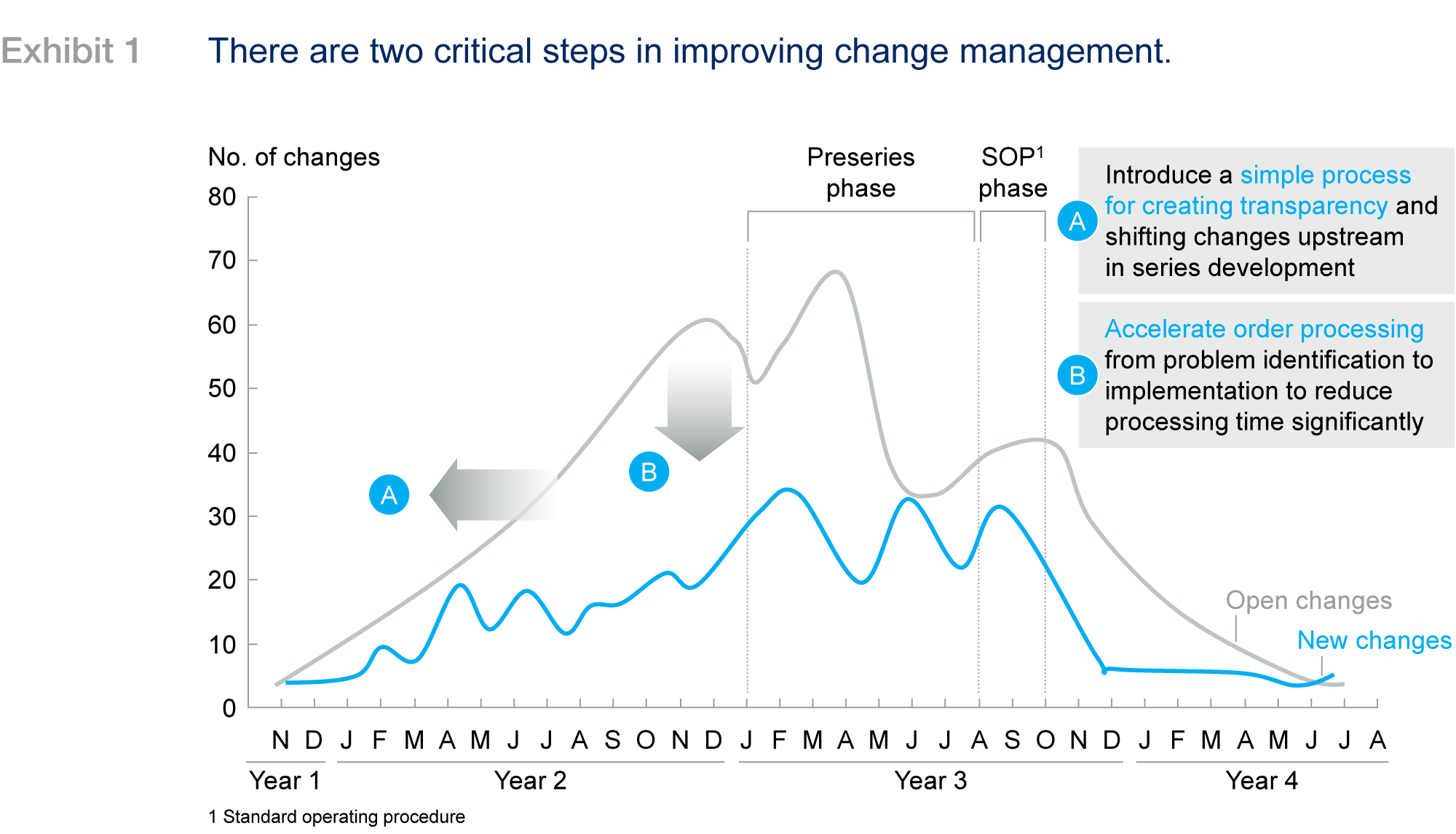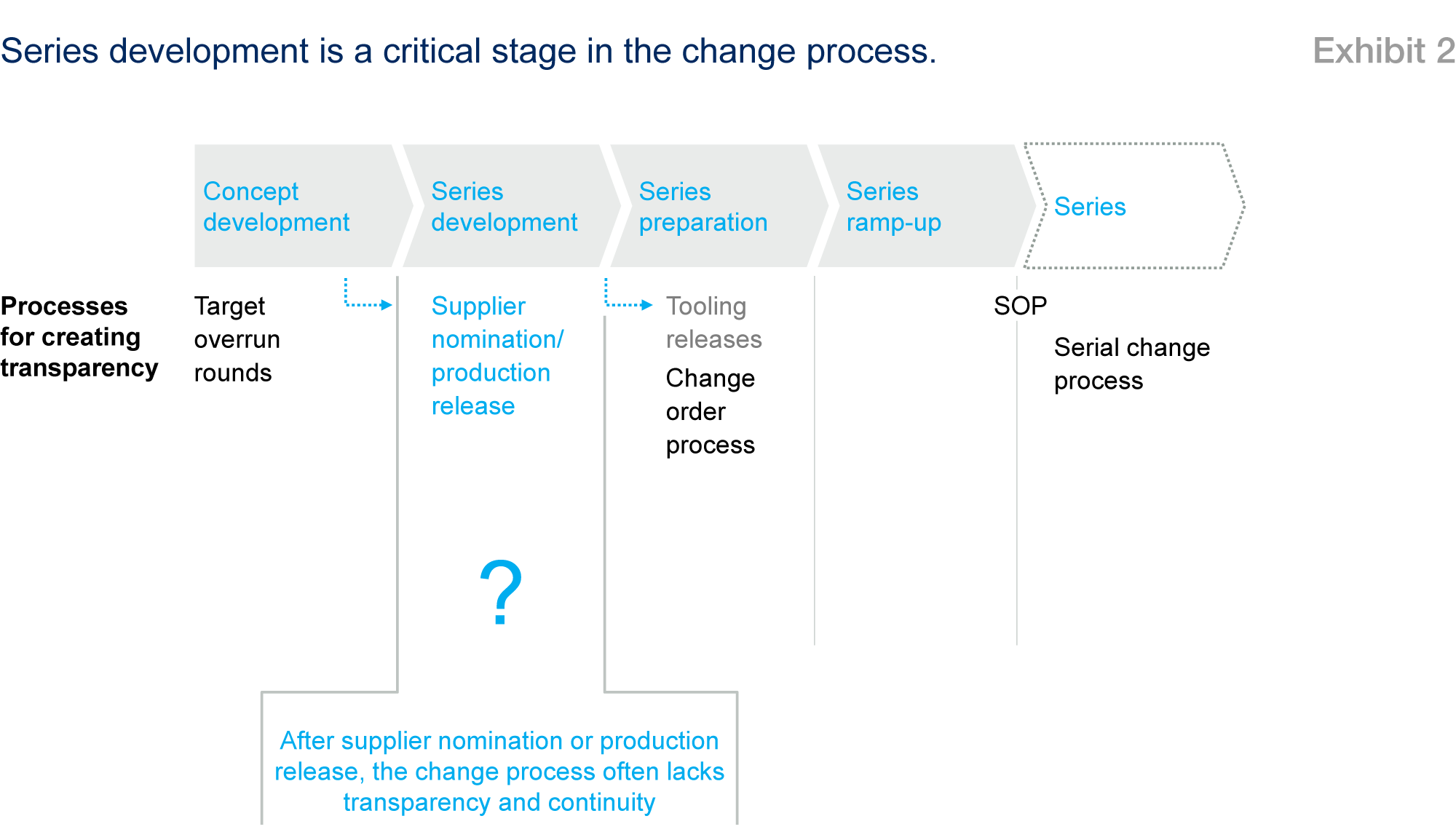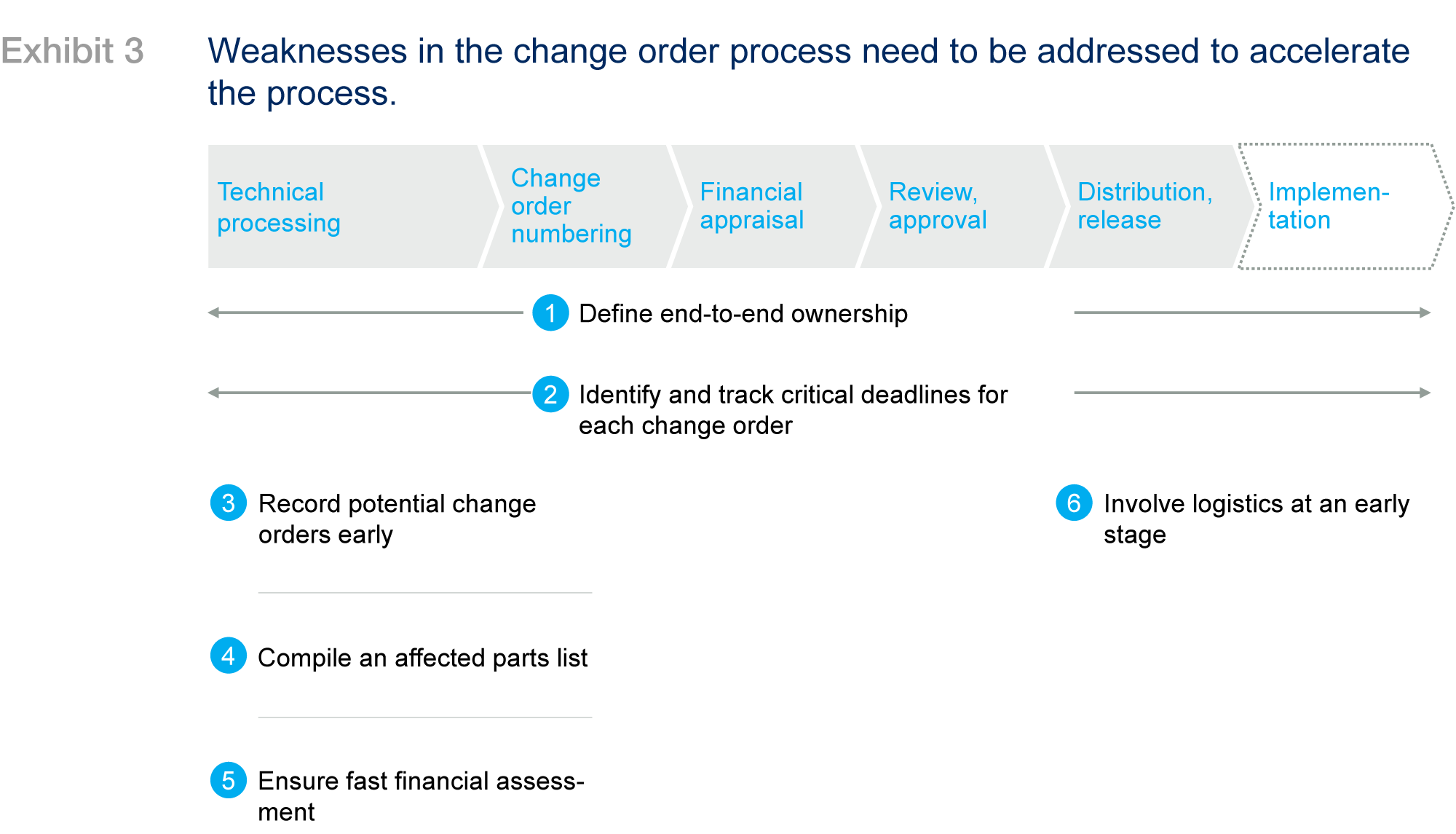In many technology-heavy industries, delays in product launches cause significant negative impact for the companies. Famous examples are delays in electricity or infrastructure projects, where fixed prices have been negotiated and penalties for not meeting the deadlines are common. One well-known example is the nuclear power plant Olkiluoto in Finland, that has at least seven years delay in completion and will cost at least three times as much as initially planned. But this is not a single event, there are many more examples.
In the automotive industry, launch problems cause not only additional internal costs. Marketing and sales plans are also jeopardized, delays can spill over to subsequent launches, and lost revenues can amount to high figures: we estimate them at approximately € 2 billion for a four months overdue launch, assuming that the customers will turn to competitors' products.
While industrial companies typically do well when it comes to stand-alone launches, managing the technology, platforms, parts, and service providers/outsourcers becomes more complex when handling multiple, interdependent launches in parallel. And because these companies often build complete product lines based upon common platforms, a single launch delay can have a huge domino effect.
These problems are becoming more acute as industrial companies launch more and more new products customized to local consumer needs and tastes. As they continue to establish global production footprints in order to be closer to customers and meet local requirements, more plants and local suppliers are making launches increasingly commonplace and evermore complex.
Change order challenges
One major driver of launch delays is the fact that technical changes are becoming more frequent during product development and production phase-in, which often results in a significant change-order-processing backlog. For example, if at the start of preseries production the first sample parts from suppliers fail to meet specifications, they must be redesigned.
Later on, with production lines scheduled to begin serial output, industrial companies often have trouble fine-tuning new product tooling. Another common problem is late input from customers and unexpected test and validation results that cause product design changes and launch delays. Finally, at the start of production, critical suppliers often struggle to meet the production ramp-up timeline, resulting in parts shortages.
The bottom line is this: advanced industries need better technical change management. Some companies are already tackling this issue head on. McKinsey has worked with several companies to rescue failed launches and uses lessons learned as the starting point for building better launch execution capabilities.
For example, one automobile company realized about a year prior to a scheduled launch that production would be delayed several months due to product quality concerns, a lack of adequate supplier preparations, behind-schedule engineering releases, and product milestone overruns.
To address these issues, the company established a cross-functional launch team that included manufacturing, engineering, procurement, quality assurance, and product management. It assigned clear roles and responsibilities, and team leaders were told to drive cross-functional problem solving and decision making. The company ensured quick decision making by creating a clearly defined schedule of daily check-in meetings that fed biweekly status reviews by a dedicated change committee.
Two steps to improve change management
In our experience, improving change management involves two critical steps: introducing transparency into the process and then accelerating the change order process to reduce the processing backlog and keep launches on schedule (Exhibit 1).

Introducing transparency
Transparency is particularly critical—and often lacking—during series development, the time period between nomination of the supplier and the final tooling release for purchased parts. Identifying necessary changes early on during this period is vital because changes become increasingly expensive to fix as suppliers start to work on their tools for the parts (Exhibit 2).

To improve transparency, a cross-functional component team needs to be established at the operational level as well as a dedicated change committee consisting of project members at the management level that decide on change requests. The cross-functional team drives three key tasks:
- Overview of components. The cross-functional engineering team jointly produces an overview of all components; this includes engineering targets, costs, deadlines, and other product specifications at the component level. Also, cross-functional engineering team members must regularly update the overview of components as new information becomes available.
- Status reports. Every two to four weeks, a designated member of the cross-functional engineering team produces a standardized status report on all changes to components and notifies product management in a dedicated change committee. Product management then checks with all engineering team members whether the changes are reflected in all relevant adjacent components.
- Clarification rounds. If necessary, critical changes are discussed and actions defined during regular clarification rounds that include the product manager, the dedicated change committee, and representatives from the cross-functional engineering team. It is also vital that any open issues are identified, discussed, and clarified for all departments.
Accelerating change order process
With the help of this transparency, industrial companies can accelerate change order processes to improve overall change management. We have identified six significant weaknesses in the processes of many companies and developed corresponding core actions to accelerate the change order process (Exhibit 3).

- Define end-to-end ownership. Without clear, end-to-end ownership, change orders tend to be handed off several times, creating interface waste and additional delays. The owner needs to play a leading role from problem identification to release, and then logistics should take over.
- Identify and track critical deadlines for each change order. While deadlines are usually met in certain phases of the change order process (for example, change order numbering to approval), delays often occur in untracked phases. Therefore, target deadlines must be determined and set for each phase and tracked using a standardized and detailed change system. The change owner is responsible for controlling deadlines, analysis, and reporting to the departments.
- Record potential change orders early. At present, team members often begin working on solutions to change orders during the series development phase without initiating a formal change order process or otherwise notifying the rest of the cross-functional team. This lack of transparency causes a lot of complications at the end of the series development phase as described before. Instead, potential change orders should be systematically recorded in the change system, a solution owner assigned, review deadlines set, and—the key—earlier awareness of potential changes by all stakeholders should be created.
- Compile an affected parts list. Engineers frequently prepare their own parts lists. But they often do not know all the affected parts necessary to execute their design change. Lists are often incomplete, leading to substantial delays in the financial assessment and implementation. Instead, the individual responsible for bills of materials (BoM)/release should complete the list of affected parts prior to filing the change request.
- Ensure fast financial assessment. Due to incomplete, incorrect, and/or nonstandardized change order documents, there are often considerable delays in the financial assessment of change orders. To remedy this problem, the appraising, purchasing, and production departments need to check the completeness of the change order request in a preclarification round. The dedicated change committee needs to do the same.
- Involve logistics at an early stage. Often, the designer determines the requested implementation date for change orders, but the request is not reviewed by logistics until after approval is granted. Instead, logistics should be involved earlier in the process, ideally in the cross-functional team meetings/change round, to plan the time-line for both purchased and in-house parts.
Putting into practice
Due in part to these change management efforts, the automobile company in our example recovered from the anticipated delay. It actually reduced projected launch costs by about 40 percent and reached peak production levels even earlier than planned: in the first ten months, the company achieved sales volumes 80 percent higher than forecast. Due to this impressive success, the company's management decided to make the process a blueprint for its launch system.
As this example shows, strong technical product launch and change management capabilities enable advanced industries to achieve and even exceed their commercial aspirations, while weak capabilities can exacerbate already serious challenges.
Nico Berhausen is an associate partner in McKinsey’s Dusseldorf office, and Eric Hannon is a partner in the Frankfurt office.